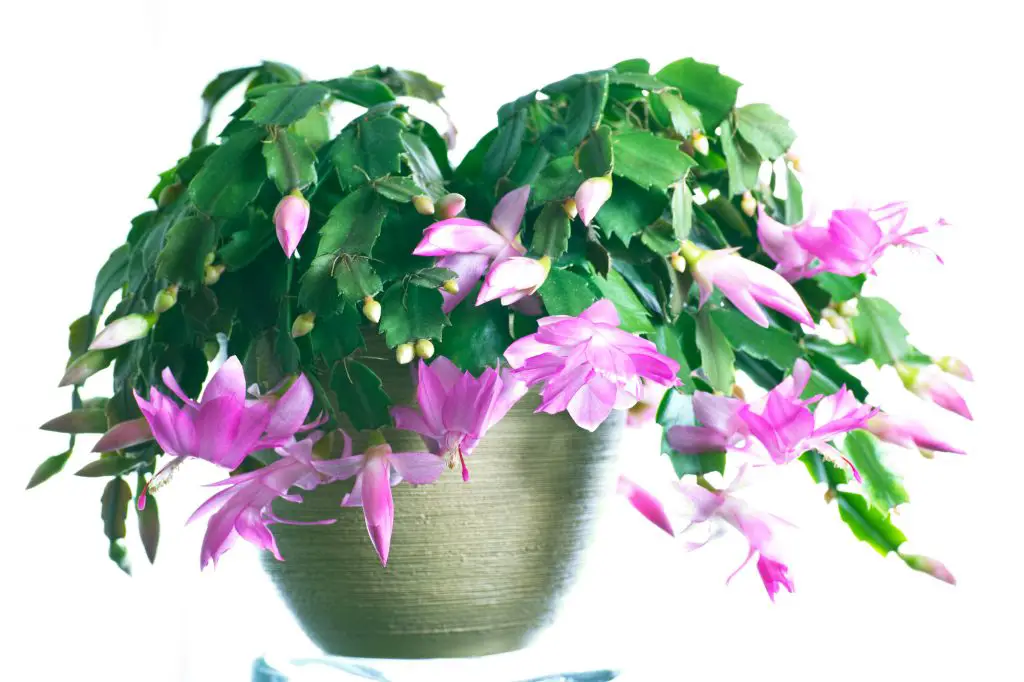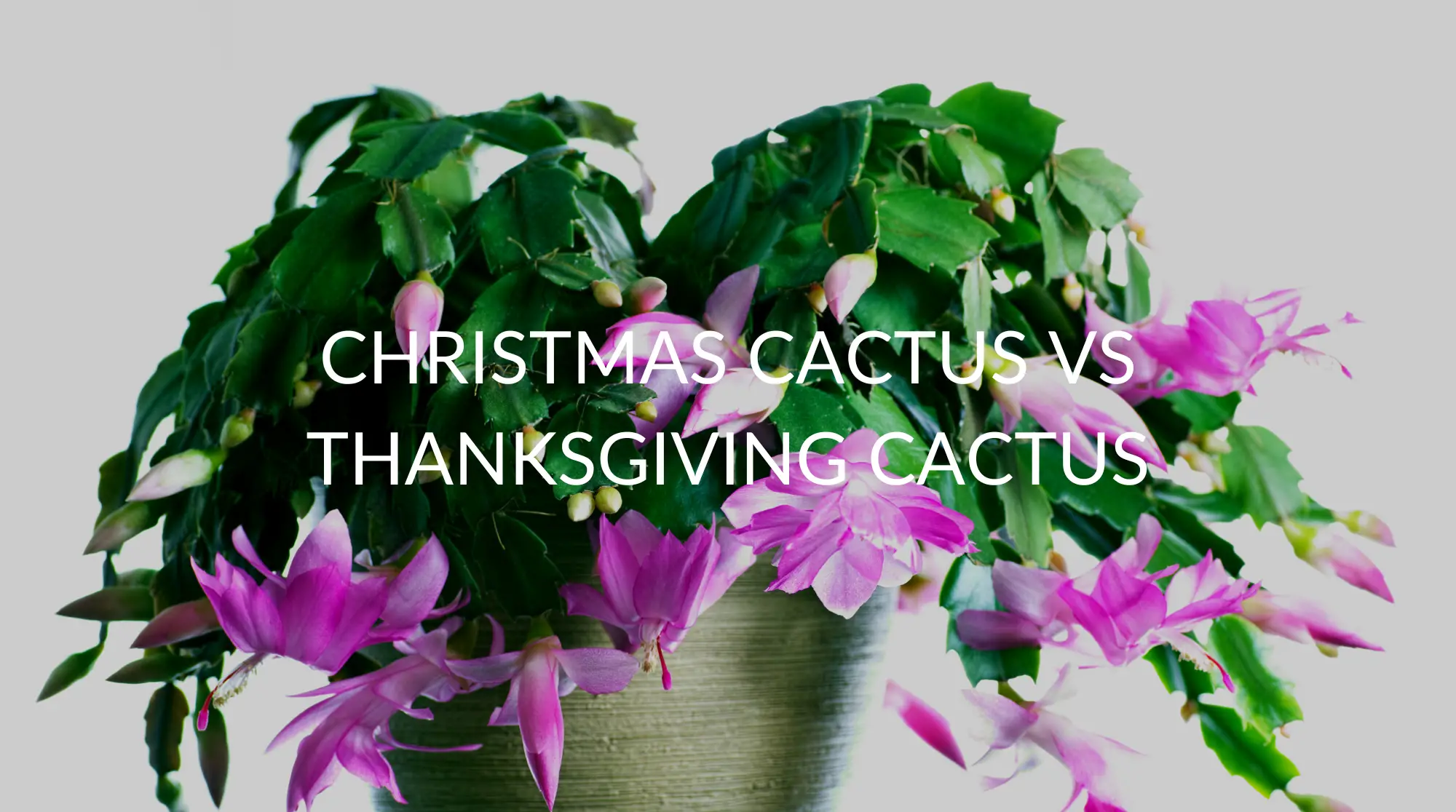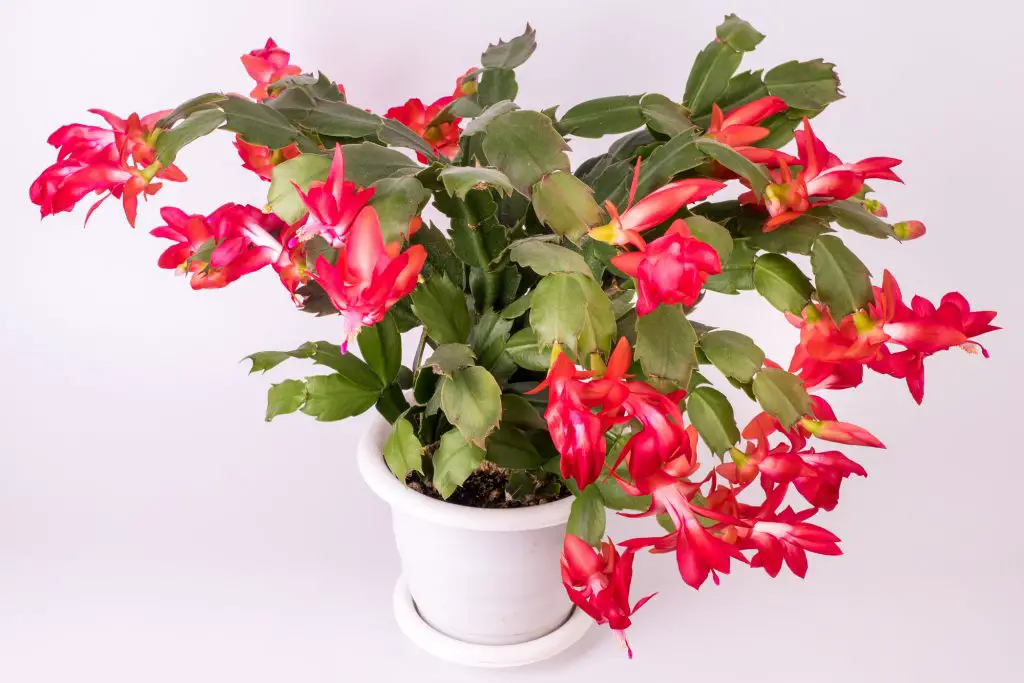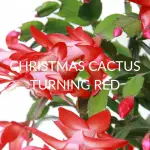Cacti can be a brilliant addition to your plant collection or a fun and different way to add a bit of diversity to your personal garden. A popular choice is often the holiday variety of cactus, but these can be confusing since they’re referred to with multiple names, often used interchangeably.
So even the most well-versed gardeners are left asking: do I have a Christmas Cactus or a Thanksgiving Cactus?
We’ll help you figure out what the difference is between these beautiful plants, so you know just what kind of plant you’re caring for and can do so in the best way possible with a few specific plant care tips and tricks. So read on to learn interesting holiday plant facts that’ll get you beautiful blooms to get your garden looking spick and span!
Do I Have a Christmas Cactus or Thanksgiving Cactus?
Both plants can seem very similar, and their bloom times tend to overlap, so the confusion between both is understandable. But they’re actually two completely separate plants with a couple of key differences that’ll help you easily identify which is which and, in turn, take better care of them with plant-specific tips.
Christmas Cacti, scientifically referred to as Schlumbergera bridgesii, have leaf projections that appear to be teardrop shaped or are more scalloped. The flowers on a Christmas Cactus usually bloom in December; however, they may also bloom between March and May.
Thanksgiving Cacti belong to the same genus as the Christmas Cacti but are scientifically referred to as Schlumbergera truncata. The leaves on these are very pointy pointed and often appear as claw-shaped projections, earning them their alternate name: “Crab Claw Cactus”. They bloom almost a month earlier than Christmas Cacti in October, around – you guessed it – Thanksgiving!
How Do I Tell a Christmas Cactus and Thanksgiving Cactus Apart?
Identifying what holiday cactus is a Christmas Cactus and which is a Thanksgiving Cactus can help you purchase or care for your plant in accordance with their bloom times which vary as their names suggest. Apart from the difference in bloom times, there are some other differences that are more visual, making it easier to identify which is which.
Flower Colors
Christmas Cacti have flowers that are usually pink or white. The flowers of this kind appear to be tubular-shaped. Thanksgiving Cacti vary greatly in terms of colors with the most common being pastels, often red, pink, peach, purple, orange, or white. It has flowers that look as if they are emerging from one another.
Bloom Pattern
A plant’s bloom pattern refers to the way new buds blossom into flowers. Both cacti tend to bloom in different ways, with the Christmas Cactus having hanging flowers and the flowers on a Thanksgiving Cactus, on the other hand, normally facing outwards.
Anthers
The anthers are the top parts of the stamen (small tube-like structures within the flower). Inspecting the cacti for the colors of their anthers can help you tell the difference between both cacti. Christmas Cacti have anthers that are pink to purplish-brown in color. Thanksgiving Cacti, however, have anthers that are yellow.
Leaves
The leaves on these plants are a dead giveaway when it comes to identifying which is which. The “phylloclades”, or simply put, the leaf segments on a Thanksgiving Cactus toothed in appearance with pointed spines. The tip of each leaf segment for a Christmas Cactus, on the other hand, is slightly curved to give a more rounded appearance.
Size
There is a very obvious difference in size for both cacti. The mature size for a Thanksgiving Cactus is 12-24 inches in length and 12-24 inches in width. A mature Christmas Cactus is usually 6–12 inches tall and 12–24 inches wide.

How To Care For Your Holiday Cactus
Often people assume cacti are low-maintenance plants which can result in their growth and bloom requirements being neglected. They vary greatly from other drought-resistant varieties that tend to grow in deserts since the holiday cacti are native to tropical rainforests. A bit of attention and care to their growth requirements can help you achieve those beautiful blooms.
Holiday cacti have been known to be passed from generation to generation owing to their incredibly long life. With the right kind of care, a holiday cactus can survive up to 100 years!
Potting
Holiday cacti have hanging blooms, so potting them in a manner that facilitates the nature of their blooming pattern is the best way to go. Potting them in clay or terra cotta pots with drainage holes can help prevent overwatering due to their water-wicking property.
Temperature and Humidity
Misting the plant regularly and/or keeping a water-filled pebble tray at the base of the plant can help maintain sufficient humidity levels. In regards to temperature, the holiday cactus’ requirements do vary, with it requiring temperatures between 70 and 80 degrees Fahrenheit during its peak growth period, but lower nighttime temperatures such as 55-65 degrees may suffice once the buds sprout.
Soil
One aspect where the holiday cactus is not very high maintenance is the soil type needed for it to grow new roots. This cactus variety tends to adapt to most soil conditions, be it sandy, perlite, or general potting soil, although a pH level of 5.5-6.2 is preferable.
Light
Holiday cacti thrive in both sunlight and shade but striking the right balance between both is key to healthy sustained growth. Diffused light is the way to go or placing the plant in the shade with access to a light source. Full sunlight may not be a problem during the winter months but come spring or summer, discoloration may ensue.
Water
Despite being a cactus, the holiday variety does require more water. Keeping the soil moist and well-watered is essential. You can ensure this by watering regularly but making sure the soil is dry before doing so. You can figure this out by checking to see if the soil is dry at a depth of 2 inches. A rule of thumb, however, would be to water 2-3 times a week.
Fertilizer
Dilute fertilizers that are both water-soluble and half-strength during early spring and summer can help regulate and boost your holiday cactus’ growth. However, avoid adding fertilizer once the flower buds begin to form. Once it is done blooming, reintroduce fertilizer to sustain healthy growth.
Pruning
Immediately after your holiday cactus blooms, pruning it is a good idea since this encourages the plant to grow more stems, facilitating branching out. Pruning up until late spring is a safe way to ensure your cactus’ growth segments are extended.
Pro Tips & Tricks
Plant care extends beyond ensuring the optimum levels of temperature, light, and humidity. Take your gardening technique up a notch by supplementing the above-mentioned ways to grow the best holiday cacti by adding the following pro tips to your plant care regimen.
- Keep your holiday cactus away from windows, vents, and frequently-opened doors. This will help prevent it from being exposed to abrupt changes in temperature and light to ensure perky, beautiful buds.
- Pots that are 1-2 inches bigger are preferred when potting your holiday cactus – anything larger could impact humidity conditions negatively and also lead to an insect infestation.
- Using a sharp, sterilized knife/scissors to remove up to a third of plant segments is advisable for effective pruning.
- Before repotting your holiday cactus wait at least 8-10 weeks to ensure good rooting. You can figure out whether this has occurred by looking out for new leaf or stem growth.
- A stunted appearance could be a result of a mealy bug infestation. Under such circumstances, it is best to repot the plant as well as trim off any infected parts.
- Watering your holiday cactus when its buds look as if they are about to open will help ensure beautiful blooms.
- The best time to grow cuttings is in the later part of spring since that is when holiday cacti initiate new growth after a period of rest in the winter.
- If your holiday cactus sheds its buds one year, this isn’t a cause for concern. If you continue providing it with the right growth conditions outlined above, it should bloom next year. However, it may need some additional help with simulating outdoor conditions for an indoor plant.
Conclusion
Holiday cacti, whether they be the Christmas variety or the Thanksgiving kind, are undoubtedly a beautiful way to spruce up your garden but knowing the difference between both can help care for them in a more apt way owing to their difference in bloom times.
Some key indicators to figuring out which is which are leaf shape, flower color, and bloom pattern as well as size. Caring for this kind of cactus can seem an easy feat, but with just a touch of extra attention coupled with a little general holiday cactus know-how, you can help your plant bloom to its full potential. A good mix of shade and sun plus regulated watering, as well as ideal humidity conditions, are some good starting points for caring for your holiday cactus.








